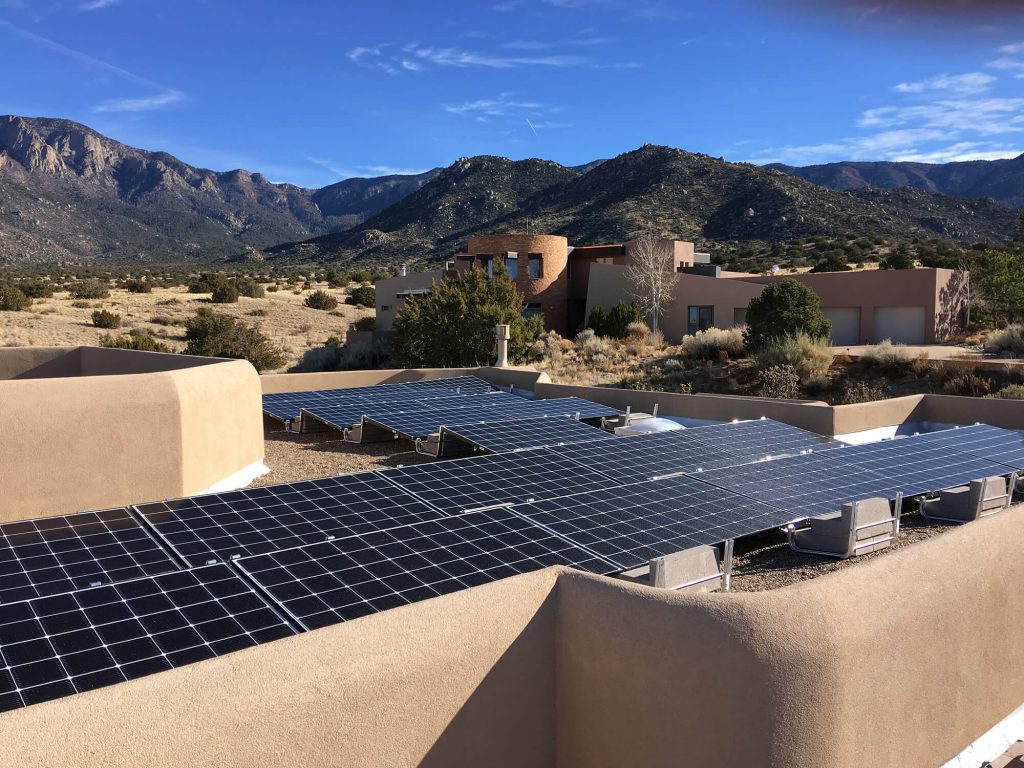Every day, solar technology is becoming more accessible while providing better energy results for consumers, whether they’re homeowners or large businesses. Thanks to advances in science and industry, we’re seeing solar and photovoltaic solutions pop up in really interesting places. Here’s a rundown of some of our favorite developments in recent memory.
Canopies for Flat-Roofed Buildings
Single-family homeowners in New York City are embracing solar power more than ever, according to the New York Times. One reason more building owners are able to add solar to their buildings is thanks to the development of a solar canopy for flat roofs, such as those most common in Brooklyn. In the Northern Hemisphere, solar panels must be tilted to get the most sunlight possible to make the panels efficient. Solar canopies on flat roof buildings solve this problem by creating a tilted surface above the roof itself. Originally developed for parking lots and carports, where they provide both solar power to nearby buildings as well as shade for the hot asphalt, these canopies have done well for buildings with flat roofs. This is especially true in New York City, where city laws dictate that fire crews must have ample room to swing an ax in the case of a fire. We’ve developed multiple ways to build tilted solar canopies in New Mexico, where we have flat roofs in abundance, and many parking lots are already using the canopies for solar energy and shade.
Solar Tiles for Rooftops
While panels are the traditional route for most solar customers, solar roof tiles have started making headlines in recent years. These glass tiles are offered as an alternative to traditional roofing materials, and can offer a similar effect while also generating solar power. Electric car manufacturer and technology leader Tesla began accepting deposits to reserve solar roof tiles in May 2017. In early 2018, they began installing their Solar Roof on homes in California at the top of their waitlist. Other companies like Dow have designed similar tiles, and there are many iterations of shingles and tiles on the market alongside other photovoltaic integrations. Unfortunately, the cost and lower efficiency of these tiles don’t make them ideal for most buyers, but as technology advances, we may see them more and more across the United States.
Window Films for Moderating Temperature
Just this week, an announcement from researchers at Chalmers University of Technology in Sweden revealed they had designed a window film that can help distribute heat from the sun throughout a building to regulate temperature more evenly. The technology that makes this possible is called the MOlecular Solar Thermal (MOST) system, which traps solar energy in a liquid medium to release at a later time as heat. This new Swedish design incorporates this technology into a color-changing window film that becomes transparent during daylight hours while trapping heat from the sun that would normally come through the windows, allowing light into the building without heat. At night when the sun goes down, the film becomes a yellow-orange color once again, and releases the stored energy as heat into the building for up to eight hours. This process allows the building to reduce its need for both heating and cooling systems throughout the day and night cycle.
Solar Roadways and Bike Paths
In 2014, the Dutch combined two of their great loves — cycling and environmentally friendly energy production — when they launched the first SolaRoad. The original bike path is 90m (285 ft) long and was the world’s first public road integrated with solar cells. Since its inception, different versions of solar pavement have been swapped out to test their efficiency, including different coating technologies, solar module designs, and cell types. In spite of difficulties including the thick coating on the surface of the cells, the flat angle of the modules, and the high numbers of travelers blocking the sun, this first SolaRoad produced 9,800 kWh of power in its first year, far outpacing expectations. Since then, SolaRoad has completed several other solar pavement projects throughout the Netherlands and France, providing hope that someday, this technology could be a worldwide phenomenon.
Many of these technologies are still in their design phases and aren’t quite ready for public consumption yet. But SolExergy is ready to help you find a solar solution that fits your building and your budget! Get in touch with us for an initial consultation.

